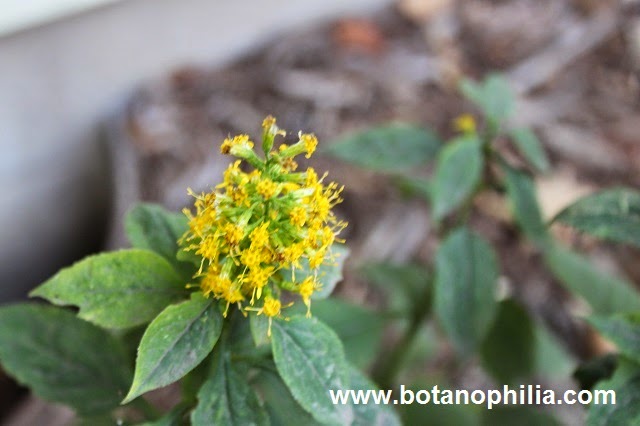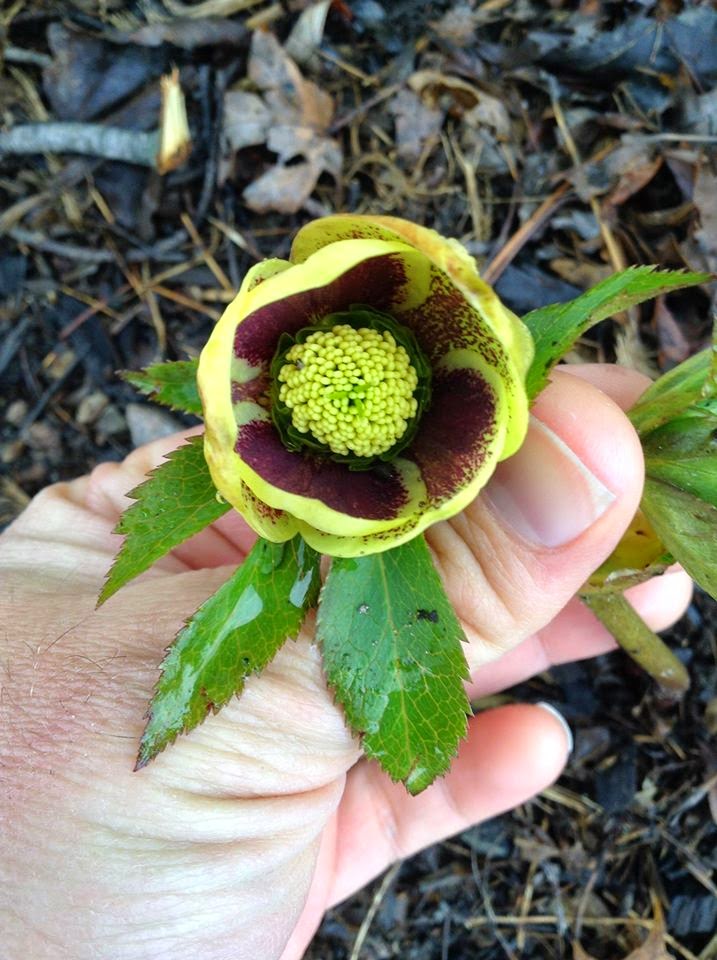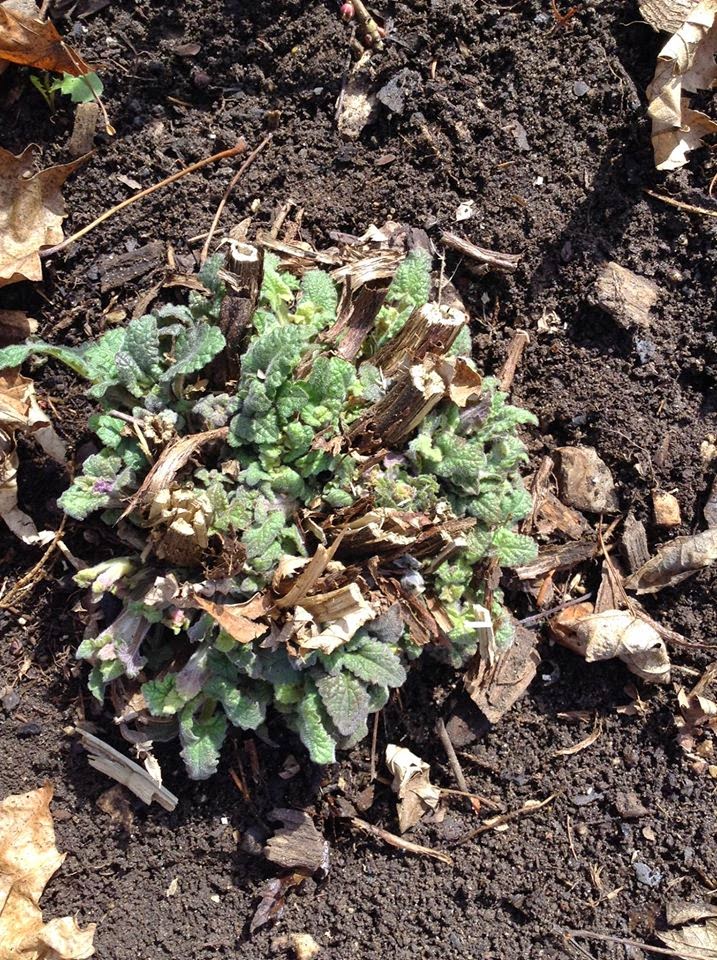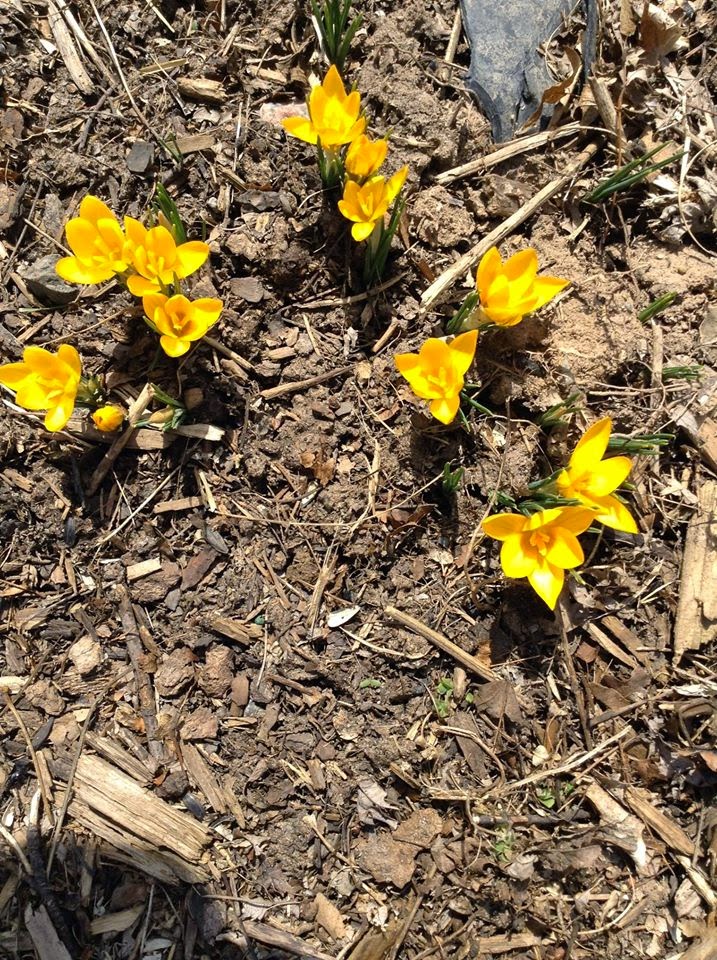Hopefully this guide will help you with fall clean-up and winterization tasks. It’s laid out to guide you through each type of garden, or plant group, and includes information about how to accomplish each task and what tools and products will make your job easier.
Annuals, Vegetables, and Tropicals
Once fall arrives and your summer annuals start looking a little tired, it’s time to remove them and either plant fall annuals like mums or prepare the beds for winter. If you plant mums, these tasks will apply when they are done blooming as well. Pull all the dead annuals out of the ground and get rid of the debris. If you compost, add any pest and disease free material to your pile and turn it like normal. If you had pest or disease problems, dispose of debris in the trash or by burning. You don’t want pests and diseases over-wintering in the garden or in the compost pile. Pull or spray any weeds that remain. Soil can erode over winter so I mulch with a thin layer of straw or leaves at this time. Straw breaks down fairly quickly so in spring I will either plant new annuals right through it or work it into the soil when I prepare the bed.
In the vegetable garden; perform the same tasks. You can plant a fall cover crop to keep soil in place over winter or you can mulch with straw or leaves. Fall cover crops act as a green manure and get tilled into the bed in spring. If you mulch with straw or leaves, that material can get tilled in during spring prep as well.
If you have tropical plants that you will bring in for the winter, now is the time to apply a systemic houseplant insecticide, clean up any damaged or dead stems, and bring them in. Place them in a location appropriate to the type of plant. Most tropicals prefer a south or east window.
Now is also the time to dig and store tender bulbs like Dahlia or Canna for the winter. Dig them up and let the foliage dry on the plant for a few days. Once the foliage is dry, cut off the stems and foliage and place the bulbs into a paper bag or open plastic bag and put them in a cool dry place like the basement.
Perennial Gardens
Fall is an important time for plants to get ready for winter. They are busy storing nutrients in their root systems to survive the winter. It’s important to let plants go dormant naturally. If you cut them back too early, you deprive them of energy to get through the winter. You can do perennial clean up in late October to late November. Cut any perennials that don’t offer winter interest back to ground level. Grasses, butterfly bush, mums, Russian sage, perennial hibiscus, coral bells, and Caryopteris all benefit from being left alone for the winter. Cut those plants back in early April.
While it’s just fine to do perennial garden clean up in fall, there are benefits to doing it in spring. Many animals including insects, birds, and mammals will use a well planted perennial garden for cover or food in the winter. Many perennials provide winter interest thanks to interesting seed heads. It’s ok to do cleanup in spring rather than fall. The exception is if you had a serious pest or disease problem on certain plants. Clean up those plants in fall and dispose of the debris in the trash to minimize those problems next season.
Shrubs
Fall pruning is often recommended; but it would be better to call it “late summer” pruning. Plants need to heal from pruning before winter sets in; if you prune too late they can suffer winter injury and you will need to do more pruning in spring. You generally want to finish any pruning by mid-August. The exception would be any spring blooming plants, which should be pruned by mid-June to allow them time to form new flower buds for next spring.
Young trees have thin bark which can be damaged by rodents, rabbits, or deer in the winter. Use a plastic trunk wrap to protect young trees for a few years. Wrap the trunk in fall and remove it in April or May.
Fall is the time to take the first step in pest control for fruit trees as well. After all the leaves fall off make sure to rake them up and dispose of them. After the leaves drop is also a good time to apply dormant oil, which smothers any insects or fungus spores that would over-winter on the branches or trunk.
I get a lot of questions about Hydrangea pruning. Different types of Hydrangea need to be pruned differently. The macrophylla types that have colorful flowers like pink or blue should be pruned in spring when they start to leaf out. Only remove dead wood; they will leaf out on old stems and bloom best on that growth. The old fashioned ‘Annabelle’ types that look like giant snowballs bloom on new growth. They can be left to leaf out on old wood or get cut back to the ground in spring. This includes newer varieties like ‘Incrediball’, ‘Bella Anna’, and ‘Invincibelle Spirit’ as well. The paniculata types like ‘Limelight’, ‘Strawberry Vanilla’, ‘Quick Fire’, ‘Limelight’, etc and the oak-leaf hydrangeas don’t need much pruning. I only prune for structure and to remove spent blooms, which I typically do in spring as the dried flowers offer winter interest. If you need to prune for structure or size, these types also bloom on new wood and pruning can be done in spring.
Roses
For roses that need winter protection such as the hybrid tea, grandiflora, or floribunda types, prune off only what you need to in order to protect them for the winter. The goal with protecting your roses isn’t to keep them warm, but to protect them from temperature fluctuations, thawing and freezing, and dry winter air.
The most common method of winter protection is the old-fashioned rose cone. If you haven’t seen these, they are styrofoam covers to go over your roses for the winter. They should be put on when we start to stay frozen, usually around Thanksgiving. It’s important to make sure your rose cones are vented; the ones we sell have vent holes in the top for warm air to escape on sunny winter days. Make sure to mound some soil or mulch around the graft union of the rose at the base of the shrub. This will further protect your rose bush through the winter.
Like other shrubs, pruning roses late in the season can lead to winter injury. A good method of winter protection is to build a cage around the rose bush with hardware cloth and fill it with oak leaves, mulch, or compost. This method allows you to protect more of your rose without pruning any stems off. If some stems stick out of the top of the cage that’s ok. They may get winter damage, but that can be pruned off in spring.
A third method for protecting roses through the winter is to not even plant them in the ground. Instead, plant them in a 12-14 inch pot and sink that pot in the ground for the summer. Around Thanksgiving, pull them out of the ground, pot and all, and place them in the garage. Give them 1 cup of water every month starting in December. This keeps them from drying out over winter and the garage will keep the temperature cold but stable. This is a great method to use for rose trees which are otherwise difficult to protect for winter.
Another method of protecting rose trees is to completely dig them up and then dig a trench about 12” deep and lay them in it. Cover with soil or compost for the winter and dig them up again in late March when the ground thaws.
Climbing roses often need protection as well. The best method is to unfasten them from their support and lay them down. If they are very tall you can prune them back a bit to make this task easier. Once laying down you can cover them with compost and mulch or evergreen boughs. This keeps them insulated for the winter.
Weed Control
Another important task for fall is weed control. Just like the perennial plants in your garden, perennial weeds are storing a lot of nutrients for winter. This makes it an excellent time to spray herbicides, since the plants take in more chemical than usual. It’s also important to hand pull any weeds before they go to seed at this time.
Roundup (or any product containing glyphosate) works well on pretty much all weeds. They are broad-spectrum herbicides, which means they will kill pretty much any plants they come into contact with so be careful to avoid accidentally spraying garden plants.
A more selective herbicide is Grass B Gon. It kills only grassy weeds like crabgrass and quackgrass. It’s still important to avoid contact with garden plants since damage can occur to leaves and flowers. It can also damage or kill ornamental grasses or your lawn. If you aren't sure if damage will occur, do a test spray and apply a small amount to a single leaf. If browning or discoloration occurs try to minimize contact with that plant.
It’s also a great time to kill weeds in your lawn. Apply a liquid formulation of Weed B Gon to turf grass areas at this time to reduce how many weeds you have in spring.
It’s important to ALWAYS read the entire label of a pesticide and apply according to label instructions. Failure to do so may result in your gardens being damaged. Not only that but you could harm yourself, your children, or your pets. So follow the directions and be safe.
Lawn
If you only fertilize your lawn once during the season, research has shown that fall is the best time to do it. Using a winterizing fertilizer helps build a strong root system for the turf to overwinter and get a strong start in spring. It’s also a great time to apply soil building fertilizer products such as Mag-I-Cal or Love Your Lawn, Love Your Soil, both from Jonathan Green. These products feed the soil microorganisms which in turn feed your lawn.
It’s also a great time to seed new lawn areas or over-seed thin areas of your lawn. Turf grasses like cool weather and will establish well before winter. The cooler temperatures in fall also means you have to do less watering. If you’re over-seeding, use a spring rake to loosen the soil surface so the seed can germinate and root in well.
Final Fall Tasks
Fall is also a great time to renew your mulch. A fresh layer of mulch not only looks great, but helps conserve moisture, cut down on weeds, and insulate your plants for winter.
It’s important to continue watering your plants through fall until we freeze. Even though deciduous plants aren't actively growing, they do continue to store water and nutrients until the soil freezes. And evergreens will continue to photosynthesize and grow anytime the temperature is above freezing. Going into winter with the proper amount of moisture helps minimize winter damage. If rainfall is scarce this autumn, make sure to irrigate. Plants won’t use as much water, but the soil should never be very dry. A good rule of thumb is to irrigate 1 inch of water per week.
Wilt Stop can help reduce winter burn on evergreens. Make sure to apply late in the fall when temperatures are above freezing. If you apply earlier and growth hasn't fully hardened off damage can occur when temperatures reach freezing. Another way to prevent winter burn is to build a burlap screen or cage around susceptible plants. You don’t want to wrap plants tightly, they still need air circulation and some light, just a loose cage or screen around them is sufficient. Pound stakes into the ground and use staples or twine to secure the burlap to the stakes.
Following these basic recommendations will ensure your landscapes are well-protected throughout the winter and, therefore, be more healthy and fruitful next spring.










